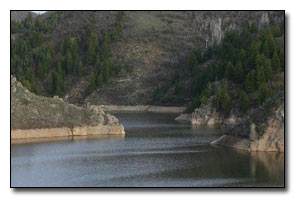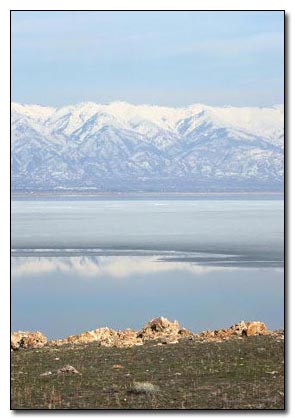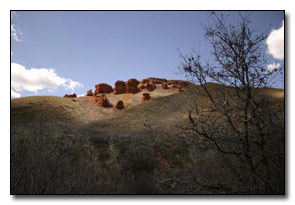|
When looking into starting an outdoor, or any magazine, you first have to look at if the market can handle the publication. If there are many outdoor related magazines in the area, or newspapers that cover the outdoors, starting a new one will be a lot harder. Content and advertisers will first look to established publications who has the readership already created.
If you believe there is a market for a new publication you then have to sit down and decide on several factors. I will not put these in any specific order since each potential publisher will have different priorities and some may affect the others.
Look of the publication: Is the magazine going to be full color, black and white, or black and white with spot color. How the magazine looks will affect readership. Full color is always the best to attract
readers, especially if you plan to run a lot of photos. Black and white is best if the editorial content is more important to you, or if you feature black and white artistic images. The look of the publication will also greatly affect the cost of production. A full color publication is a lot more expensive to produce than a black and white one.
Publication content: Here you need to decide what you will and will not include in your magazine. Since
 the outdoors is such a wide subject it will be very hard to cover it all unless you have a very large page count. It is best to make a list of possible content you want to include. Actually, it's better to make several lists. The first being topics you always want to cover. The second things you would like to cover and, third, items you will cover if space allows.
the outdoors is such a wide subject it will be very hard to cover it all unless you have a very large page count. It is best to make a list of possible content you want to include. Actually, it's better to make several lists. The first being topics you always want to cover. The second things you would like to cover and, third, items you will cover if space allows.
Content is one of the biggest subjects you will have to tackle. Depending on your situation, people you know, and people you can get in touch with will limit the content you can include. For most publications, especially smaller ones, local topics will be the most covered. It's pretty hard for most of us to get someone to write an article on the health and well being of the Antarctic sea lions or other exotic animals, but, is probably a lot easier to get an article on fishing tips at your local lake.
You also need to look at timely and controversial subjects. Most magazines are published monthly, so very timely article are hard to cover and best left to the newspapers. Controversial subjects can bring in a
strong readership as they won't have such wide coverage. But, being controversial, you also stand to lose readers who don't agree with the article. As the publisher and editor (unless you hire someone to do this), you will have to decide what you should and should not run.
Cost of the publication: Magazines can be very costly to publish. The cost of your publication will depend on factors like quantity, style (color or B&W), layout and other specifics. If you have unlimited funds you could go for a full color magazine with nation wide distribution, of course this will cost somewhere in the millions to produce, whereas a small, local B&W publication can be done for only a couple hundred dollars. You may also have to consider the cost of content. Can you write all the content? Can you find someone to write content? Will you have to pay them, and if so, how much.
Other costs to consider come in the form of distribution of the magazine. If it is fairly small and local you can easily distribute the publication yourself. If it is large and wide will you still do it yourself or will you hire people to do it, or will you mail it to distribution points? Will you offer an online
 edition? And, if so, in what format will it be, HTML, PDF, an e-book or plain text? Will the online edition be downloadable and printable? Will you email subscribers with it or to let them know it's ready?
edition? And, if so, in what format will it be, HTML, PDF, an e-book or plain text? Will the online edition be downloadable and printable? Will you email subscribers with it or to let them know it's ready?
Profits from the magazine: Putting together a magazine is a lot of work, even a fairly small one. Most people that do it, even if they love the topic, will still want to get paid for their work. Magazine publishing can be very profitable, but is also risky. If you are doing a small one for fun or hobby then making a profit isn't as much of a factor. But, unless you plan to finance all the issue yourself you still need to cover the cost of the publication.
Profits can be made several ways. You can charge a newsstand price for the magazine. Most magazines do this, called a cover price. This is the price printed on the magazine when you buy it at a newsstand or bookstore. These magazines will usually have a discount subscriber rates which are paid for yearly, or
more. If the publication costs you a dollar a copy to produce and you charge three dollars for the cover price or two dollars for subscribers your profit will depend on the number of copies sold and number of subscribers. Subscribers are what most publications target. These are prepaid and you know how many you have, which means you know your profit margin. A start up magazine needs to estimate the number of newsstand copies they can sell. If you guess too many, and produce them, this can be very costly and sink a magazine on the first issue.
Along with subscribers most magazines will also sell advertising. While it will distract from the content of the magazine most readers realize that they are needed to keep the magazine in circulation. The advertising rates will greatly vary depending on circulation, how many copies are produced and distributed and on the target audience, or readership.
If you do go with advertising you need to decide on the edit to ad ratio. This will be how much content you have as compared to how much ad space you have. The edit to ad ratio will depend on the cost of your
publication and how much profit you want to make. Magazines vary greatly on what they feel is a good ratio. A magazine with a high subscriber rate will go with a small edit to ad ratio; this will give readers more content for their pre-paid dollar. A start up magazine will usually need a higher ratio to cover not having a set subscriber rate. The exception to this rule is the publisher who gets the subscribers built up before putting out the first issue, though this is very difficult unless you have a recognizable name in the area, or spend a lot of money on advertising your magazine.
Your audience: You do you want the magazine to appeal to? While it would be nice to create a magazine that appeals to everyone this just isn't going to happen. If you want to target a younger audience you would include more information on mountain climbing and kayaking. For an older audience you may want to
 focus on bird watching and walking trails. Either way you will probably want to include as much information as you can that will appeal to everyone. General outdoor articles on camping, fishing and hunting will attract a wide variety of readers.
focus on bird watching and walking trails. Either way you will probably want to include as much information as you can that will appeal to everyone. General outdoor articles on camping, fishing and hunting will attract a wide variety of readers.
Once you decide on the above factors, and probably a few more I didn't include, you have actually do the magazine, here comes the hard part. If you have the knowledge and software you can do the entire layout yourself. This can save a lot on money on production costs. Many companies will charge $35 an hour or more to do layout work.
How do you want the cover laid out? Will it be a photo cover or will you start the text on the cover? Most major magazines have a full color image on the cover, with feature content titles laid out. A small publication will usually start with text on the cover; this saves a lot of room, more for advertisers or more content.
How will the inside be laid out? Even a standard page can be setup very differently. You could have a single page of text and photos, or have columns of text with photos. Most magazines are setup with two or three columns of text, with photos overlapping. Though, I have seen text all the way across wrapping around the photos or with the photos on top or bottom of the article.
Laying out the magazine before getting advertisers can be beneficial to do. While it may mean more work, the ad space you have already laid out may not fit what the advertisers need. This means you may have to redo the layout. If you are paying someone to do the layout make sure they know the layout may change. If you are doing the layout yourself then be prepared to put a lot more time into the design aspect.
As I mentioned above setting up the magazine may be to your benefit, here's how. With a fully laid out magazine you have something to show potential advertisers to let them see what you have planned and that you are serious about putting it out. While you can print this mock edition on your computer you should ask the printer you plan to use if they can do one close to what the final version will look it. But, even a decent home printed one will help to draw the advertisers in.
In the cost section I mention the quantity you planned to have printed. Advertisers will look at this above all else. A smaller 1000 distributed copies won't appeal near as much to advertisers as a larger 10,000 copies. They will also ask you about distribution of the publication. Where you plan on selling the magazine and are you sure you can get the rack space from them. Real estate, a term used in retail for desired area in a retail setting, for selling magazines, as much as anything else, can be difficult to get, there is a lot of competition out there. Some places may also have an exclusive contract with another company that your publication may interfere with. In this case there isn't a lot you can do other than find a new place.
When looking for places to distribute your magazine look to convenience stores and super markets as good places, not to mention any outdoor stores. But, beware, if you have a large ad from a competitor, and not them, they may not want your magazine in there.
This is by no means a full description on how to put out an outdoor or any other type, of magazine. As you start you will find various other aspects that I didn't cover here. A full step by step procedure would require a lot more time and space I have for this one.
If, after all this, you still want to put a magazine out I suggest starting small. A black and white issue with 500 to 1000 or so copies will be fairly easy to put out and will teach you the ins and outs of what it takes. See you on the shelf.
|

